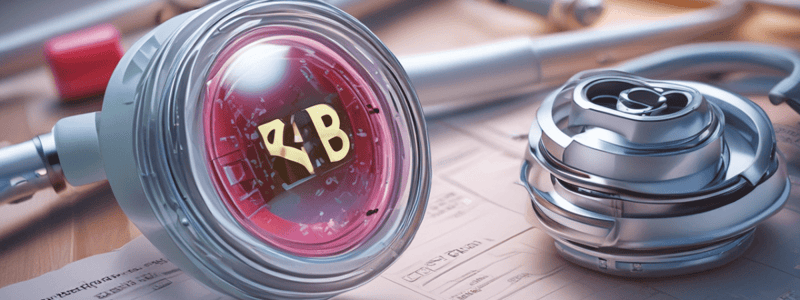Podcast
Questions and Answers
What is the difference between an abbreviation and an acronym?
What is the difference between an abbreviation and an acronym?
- There is no difference between an abbreviation and an acronym
- An abbreviation is a word formed from the initial letters of other words, while an acronym is a shortened form of a word or phrase
- An abbreviation is always longer than an acronym
- An abbreviation is pronounced with each letter separately, while an acronym forms a word (correct)
Why is it important to avoid using trailing zeros after a decimal point in medication dosages?
Why is it important to avoid using trailing zeros after a decimal point in medication dosages?
- To prevent misinterpretation of the dosage (correct)
- To comply with hospital regulations
- To save space on the prescription label
- To make the dosage easier to read
What is required by The Joint Commission regarding medical abbreviations in hospitals?
What is required by The Joint Commission regarding medical abbreviations in hospitals?
- Hospitals are not required to regulate the use of abbreviations
- Hospitals must issue a list of approved abbreviations, excluding prohibited ones (correct)
- Hospitals must prohibit the use of all abbreviations
- Hospitals must use a standardized list of abbreviations provided by The Joint Commission
What is an example of a prohibited abbreviation that could lead to errors?
What is an example of a prohibited abbreviation that could lead to errors?
What is the purpose of using commonly understood abbreviations and acronyms in patient care?
What is the purpose of using commonly understood abbreviations and acronyms in patient care?
Flashcards are hidden until you start studying
Study Notes
- Use commonly understood abbreviations and acronyms for faster communication in patient care, but avoid sacrificing accuracy.
- An abbreviation is pronounced with each letter separately, while an acronym forms a word (e.g., EMT vs. USA).
- Medical abbreviations must be consistent with approved lists to prevent errors like ambiguity between "hour of sleep" and "half strength."
- Avoid using trailing zeros after a decimal point in medication dosages to prevent misinterpretation (e.g., use 0.5 instead of 5.0).
- Hospitals must issue a list of approved abbreviations, excluding prohibited ones like certain symbols for micrograms, as required by The Joint Commission.
Studying That Suits You
Use AI to generate personalized quizzes and flashcards to suit your learning preferences.




